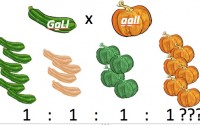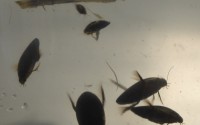Former GK-12 Fellow Susan Magnolia finds rapid evolution in prairie restoration plants at the GLBRC. Read about her story, here: https://lter.kbs.msu.edu/2018/01/magnoli/
Congratulations to former KBS GK-12 fellow, Bonnie McGill, who has been awarded with a David H. Smith Conservation Fellowship from the Society for Conservation Biology and the Cedar Tree Foundation.
For her fellowship project, Bonnie will complete a project titled, “Farming for a smaller Dead Zone: How agricultural conservation practices, artificial drainage, and climate change affect water quality in Iowa” under the mentorship of Drs. Amy Burgin and Terry Loecke at the University of Kansas and in partnership with W. Dean Hively of the USGS Eastern Geographic Science Center.
To see what Bonnie has been up to, check out her website and blog at http://bonniem.weebly.com/




























